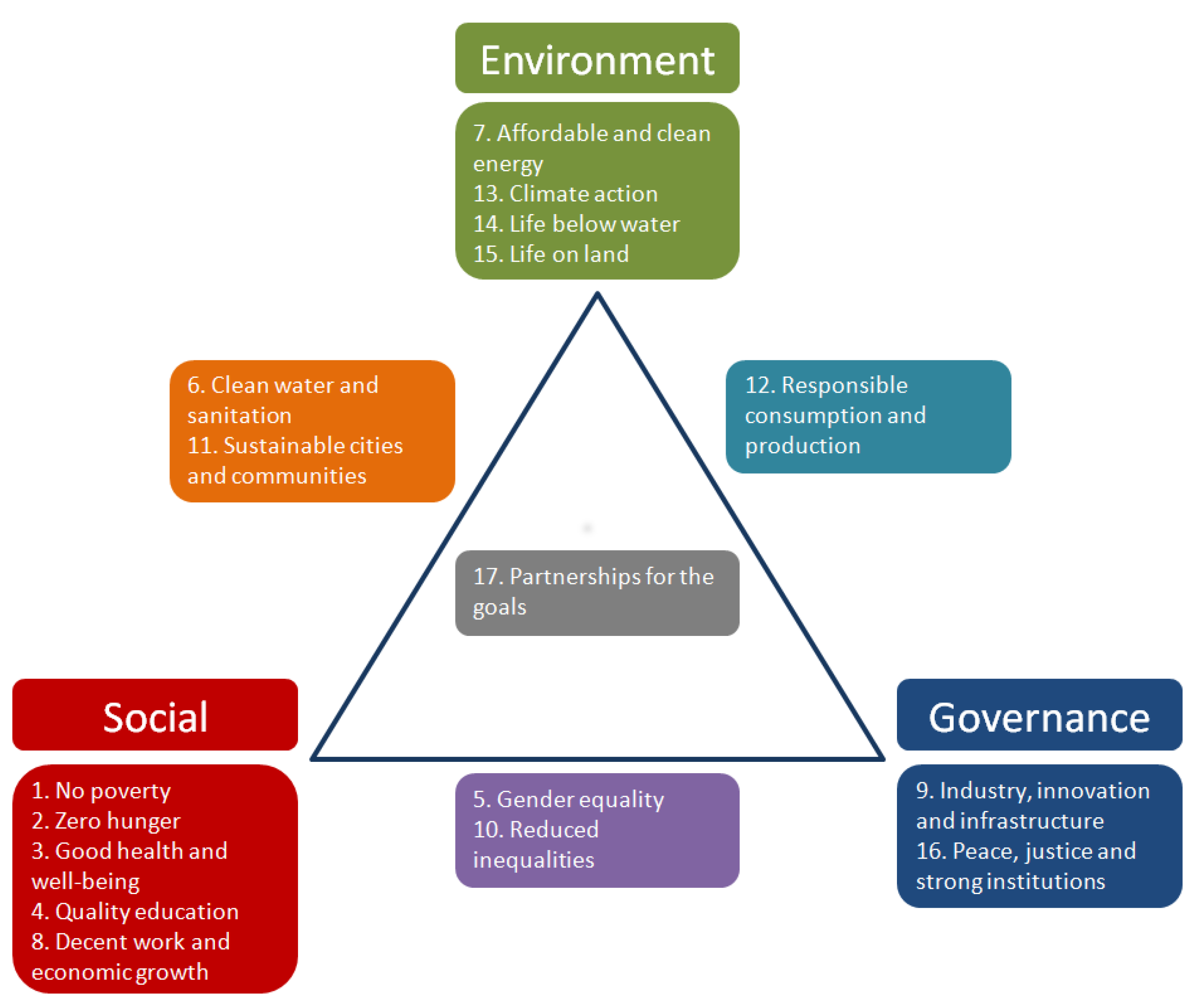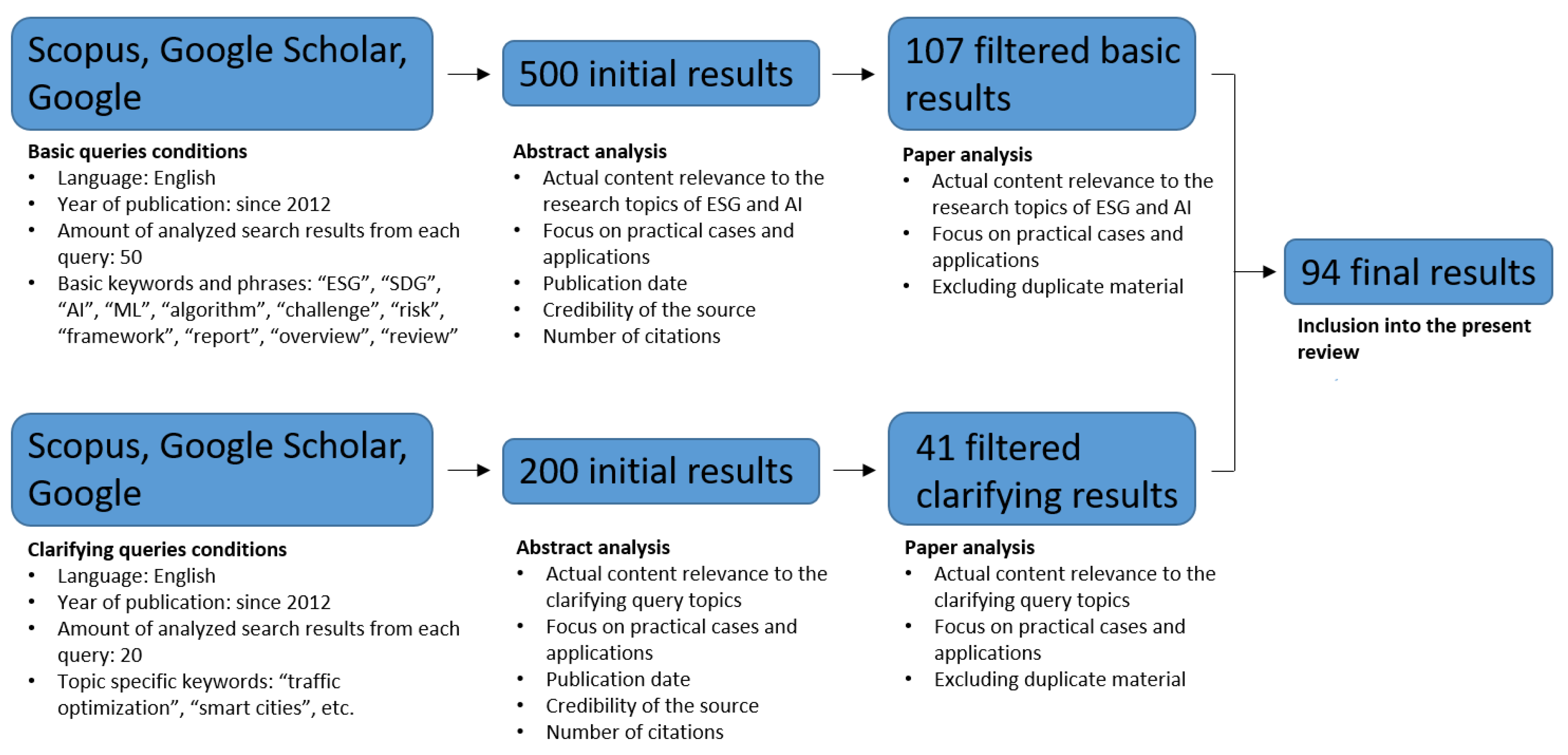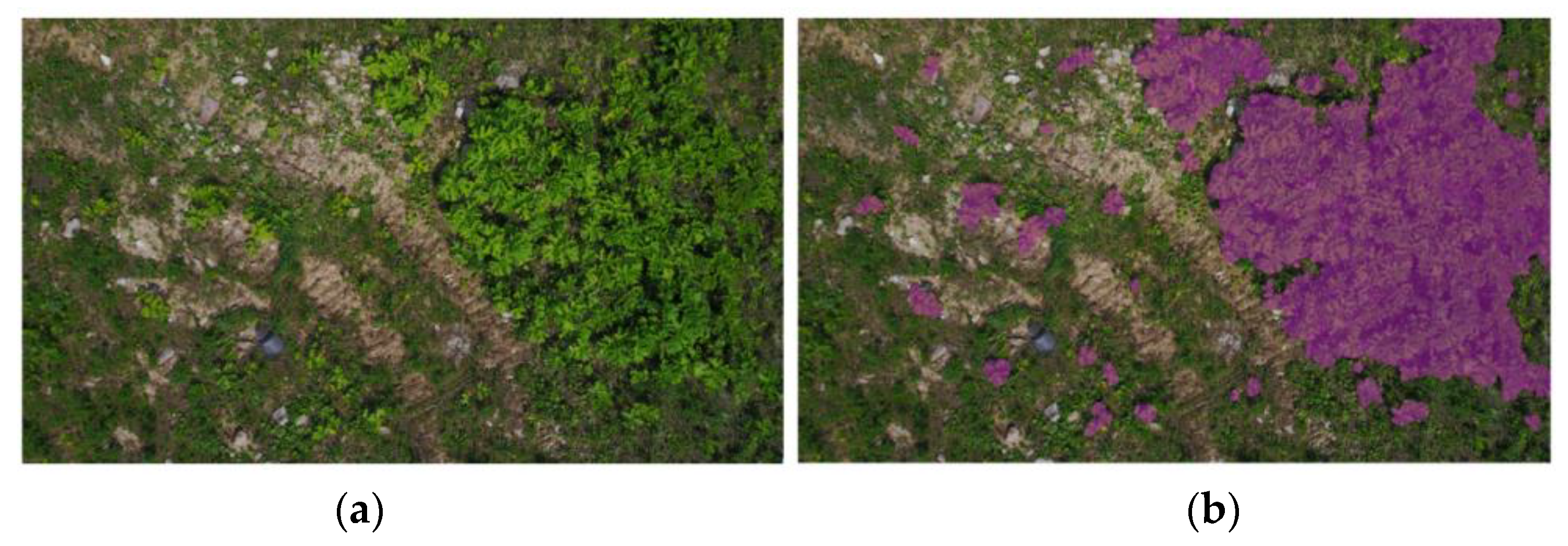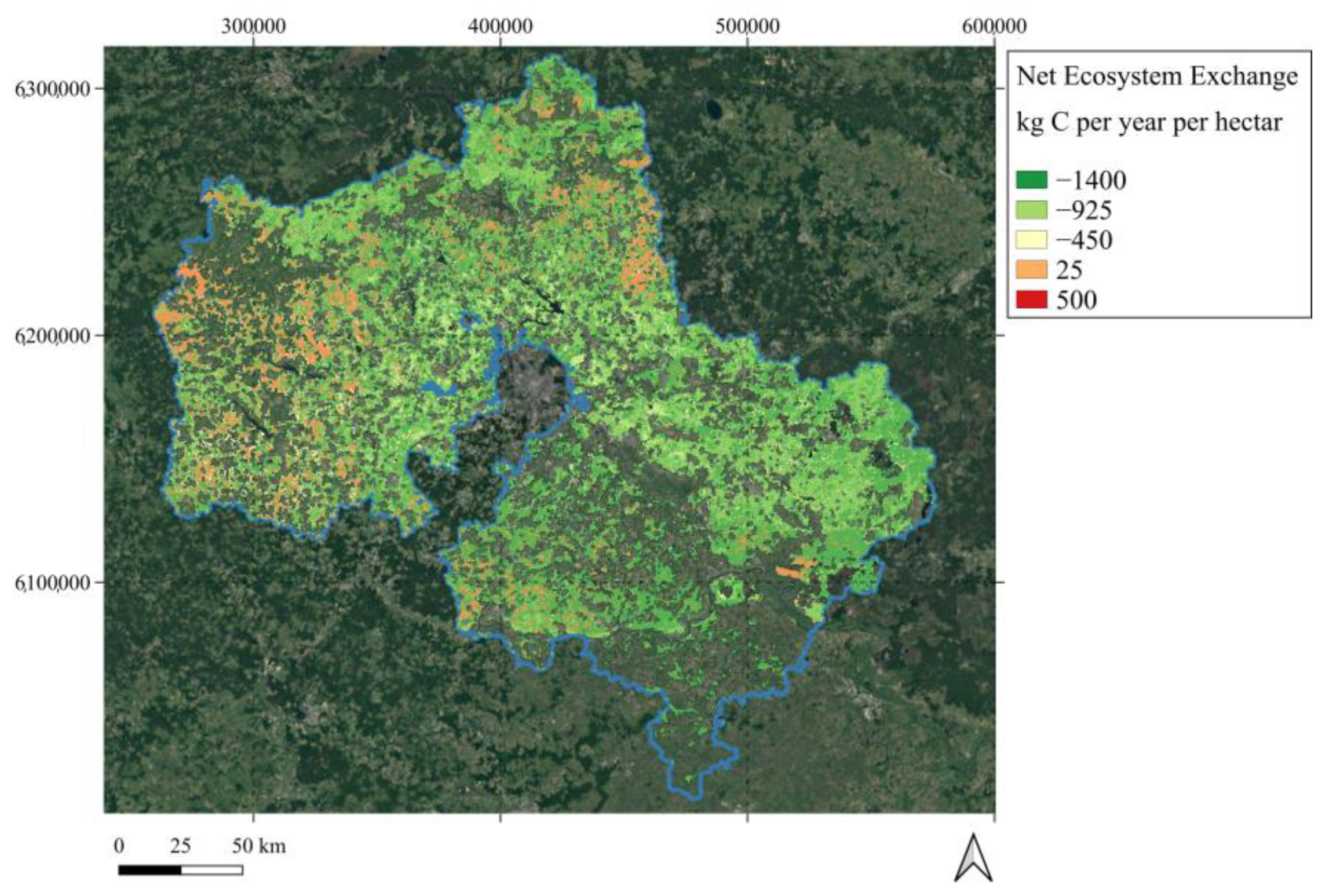Practical AI Cases for Solving ESG Challenges
Abstract
:1. Introduction
1.1. ESG Overview
- Environment—topics associated with the outside world and ecology;
- Social—issues tied to society and quality of life;
- Governance—problems involving the organization’s efficient self-assessment and interaction with government agencies.
1.2. AI Potential in ESG
1.3. Research Motivation
- Practical AI applications for each ESG domain;
- Challenges that AI can pose in terms of ESG.
1.4. Research Scope
- It solves a production or business problem that is somehow tied to ESG;
- It is successfully tested on real data;
- It relies on ML methods (generally, AI is considered to be a broad term encompassing any method that mimics human intelligence, such as applying if–then–else rules or logical reasoning, but, here, we mostly focus on statistical approaches).
- Data analysis—obtaining useful insights from the statistical analysis of data;
- Predicting, classifying, or clustering something—evaluating the parameters’ behavior or somehow grouping them;
- Optimization—using the outcome of one or both of the above steps to improve the desired results by finely tuning the problem input parameters.
1.5. Research Goals
2. Research Methodology
- Language: English (no translations considered);
- Year of publication: since 2012 (10-year time interval before the start of the current research);
- Timeframe of queries: December 2022–February 2023;
- Online sources (scientific reports): Google Scholar and Scopus;
- Online sources (public reports and industrial presentations): Google;
- Amount of analyzed search results from each query: 50;
- Basic keywords and phrases: “ESG”, “environment”, “social”, “governance”, “SDG”, “sustainable development goals”, “AI”, “artificial intelligence”, “ML”, “machine learning”, “algorithm”, “challenge”, “risk”, “framework”, “report”, “overview”, and “review”.
- ○
- General information about ESG and SDG (“sustainable development goals review”, “ESG framework report”, etc.);
- ○
- AI in each ESG domain (“machine learning environment”, “AI algorithm governance framework”, etc.);
- ○
- AI as an ESG challenge (“ML social risks”, “artificial intelligence challenge environment”, etc.).
- Actual content relevance to the research topics of ESG and AI—for instance, ESG (extended similarity group) also refers to the sequence-based function prediction method for forecasting diverse functions of moonlighting proteins;
- Focus on practical cases and applications—as explained in Section 1.4;
- Publication date—preference was given to the most recent works (e.g., if two publications dated 2010 and 2018 both discussed smart cities, the latter was chosen as it included earlier data as of 2010 as well as more contemporary information as of 2018); the only exceptions were the original documents such as UN Sustainable Development Goals [4];
- The credibility of the source—peer-reviewed publications, as some material originated from Google Scholar;
- The number of citations—if several publications shared the same topic and were published during the same year, preference was given to a study with a larger number of citations (while this could be viewed as introducing bias, it is assumed that having more citations means a greater coverage of the results and hence a greater value to a broader community).
3. Results and Discussion
3.1. Environment
3.2. Society
- Predictive maintenance of crucial infrastructure prevents accidents and disruptions [48];
- A human-centered environment leads to transparent residents–authorities interaction [49];
- Optimized logistics and scheduling improves transportation sustainability [52];
- Traffic lights adjust to the road situation and prevent traffic jams [47].
3.3. Governance
3.4. Sustainable AI
4. Conclusions
4.1. Research Summary
4.2. Current Limitations and Further Research
Author Contributions
Funding
Data Availability Statement
Acknowledgments
Conflicts of Interest
References
- Reformis. ESG Data—What You Need To Know. Available online: https://www.reformis.com/esg-data-what-you-need-to-know/ (accessed on 21 December 2022).
- Hughes, A.; Urban, M.A.; Wójcik, D. Alternative ESG Ratings: How Technological Innovation Is Reshaping Sustainable Investment. Sustainability 2021, 13, 3551. [Google Scholar] [CrossRef]
- UN Environment Programme—Finance Initiative. Who Cares Wins—The Global Compact Connecting Financial Markets to a Changing World. Available online: https://www.unepfi.org/fileadmin/events/2004/stocks/who_cares_wins_global_compact_2004.pdf (accessed on 21 December 2022).
- UN Sustainable Development Goals. 17 Goals for People, for Planet. Available online: https://www.un.org/sustainabledevelopment/development-agenda/ (accessed on 21 December 2022).
- Minkkinen, M.; Niukkanen, A.; Mäntymäki, M. What about investors? ESG analyses as tools for ethics-based AI auditing. AI Soc. 2022, 1–15. [Google Scholar] [CrossRef]
- Amundi Asset Management. The Alpha and Beta of ESG Investing. Available online: https://research-center.amundi.com/page/Article/2019/01/The-Alpha-and-Beta-of-ESG-investing?search=true (accessed on 21 December 2022).
- Friede, G.; Busch, T.; Bassen, A. ESG and financial performance: Aggregated evidence from more than 2000 empirical studies. J. Sustain. Financ. Invest. 2015, 5, 210–233. [Google Scholar] [CrossRef]
- Principles of Responsible Investment (PRI). What Is Responsible Investment? Available online: https://www.unpri.org/an-introduction-to-responsible-investment/what-is-responsible-investment/4780.article (accessed on 21 December 2022).
- Hong, H.; Kacperczyk, M. The price of sin: The effects of social norms on markets. J. Financ. Econ. 2009, 93, 15–36. [Google Scholar] [CrossRef]
- Berenberg. Understanding the SDGs in Sustainable Investing. Available online: https://www.berenberg.de/files/ESG%20News/SDG_understanding_SDGs_in_sustainable_investing.pdf (accessed on 21 December 2022).
- In, S.Y.; Rook, D.; Monk, A. Integrating Alternative Data (Also Known as ESG Data) in Investment Decision Making. Glob. Econ. Rev. 2019, 48, 237–260. [Google Scholar] [CrossRef]
- Extance, A. How AI technology can tame the scientific literature. Nature 2018, 561, 273–275. [Google Scholar] [CrossRef] [PubMed]
- Sarker, I.H. Ai-based modeling: Techniques, applications and research issues towards automation, intelligent and smart systems. SN Comput. Sci. 2022, 3, 1–20. [Google Scholar] [CrossRef]
- Chien, C.F.; Dauzère-Pérès, S.; Huh, W.T.; Jang, Y.J.; Morrison, J.R. Artificial intelligence in manufacturing and logistics systems: Algorithms, applications, and case studies. Int. J. Prod. Res. 2020, 58, 2730–2731. [Google Scholar] [CrossRef]
- Vinuesa, R.; Azizpour, H.; Leite, I.; Balaam, M.; Dignum, V.; Domisch, S.; Felländer, A.; Langhans, S.D.; Tegmark, M.; Nerini, F.F. The role of artificial intelligence in achieving the Sustainable Development Goals. Nat. Commun. 2020, 11, 233. [Google Scholar] [CrossRef]
- Jose, R.; Panigrahi, S.K.; Patil, R.A.; Fernando, Y.; Ramakrishna, S. Artificial intelligence-driven circular economy as a key enabler for sustainable energy management. Mater. Circ. Econ. 2020, 2, 1–7. [Google Scholar] [CrossRef]
- UN General Assembly (UNGA). A/RES/70/1Transforming Our World: The 2030 Agenda for Sustainable Development. Resolution 25. Available online: https://www.un.org/en/development/desa/population/migration/generalassembly/docs/globalcompact/A_RES_70_1_E.pdf (accessed on 21 December 2022).
- Toniolo, K.; Masiero, E.; Massaro, M.; Bagnoli, C. Sustainable Business Models and Artificial Intelligence: Opportunities and Challenges. In Knowledge, People, and Digital Transformation. Contributions to Management Science; Matos, F., Vairinhos, V., Salavisa, I., Edvinsson, L., Massaro, M., Eds.; Springer: Cham, Switzerland, 2020; pp. 103–117. [Google Scholar] [CrossRef]
- Sætra, H. A Framework for Evaluating and Disclosing the ESG Related Impacts of AI with the SDGs. Sustainability 2021, 13, 8503. [Google Scholar] [CrossRef]
- Page, M.; McKenzie, J.; Bossuyt, P.; Boutron, I.; Hoffmann, T.C.; Mulrow, C.D.; Shamseer, L.; Tetzlaff, J.M.; Akl, E.A.; Brennan, S.E.; et al. The PRISMA 2020 statement: An updated guideline for reporting systematic reviews. BMJ 2021, 372, 105906. [Google Scholar] [CrossRef]
- Taddeo, M.; Tsamados, A.; Cowls, J.; Floridi, L. Artificial intelligence and the climate emergency: Opportunities, challenges, and recommendations. One Earth 2021, 4, 776–779. [Google Scholar] [CrossRef]
- Novikov, G.; Trekin, A.; Potapov, G.; Ignatiev, V.; Burnaev, E. Satellite imagery analysis for operational damage assessment in emergency situations. In Proceedings of the 21st International Conference on Business Information Systems, Berlin, Germany, 18–20 July 2018. [Google Scholar] [CrossRef]
- Jha, S.K.; Bilalovic, J.; Jha, A.; Patel, N.; Zhang, H. Renewable energy: Present research and future scope of Artificial Intelligence. Renew. Sustain. Energy Rev. 2017, 77, 297–317. [Google Scholar] [CrossRef]
- Ye, Z.; Yang, J.; Zhonga, N.; Tu, X.; Jia, J.; Wang, J. Tackling environmental challenges in pollution controls using artificial intelligence: A review. Sci. Total Environ. 2020, 699, 134279. [Google Scholar] [CrossRef]
- Albuquerque, R.W.; Vieira, D.L.M.; Ferreira, M.E. Mapping Key Indicators of Forest Restoration in the Amazon Using a Low-Cost Drone and Artificial Intelligence. Remote Sens. 2022, 14, 830. [Google Scholar] [CrossRef]
- Kwok, R. AI empowers conservation biology. Nature 2019, 567, 133–134. [Google Scholar] [CrossRef]
- Matveev, A.; Rakhimov, R.; Artemov, A.; Bobrovskikh, G.; Egiazarian, V.; Bogomolov, E.; Panozzo, D.; Zorin, D.; Burnaev, E. DEF: Deep Estimation of Sharp Geometric Features in 3D Shapes. ACM Trans. Graph. 2022, 41, 1–22. [Google Scholar] [CrossRef]
- Mesquita, G.P.; Mulero-Pázmány, M.; Wich, S.A.; Rodríguez-Teijeiro, J.D. A practical approach with drones, smartphones, and tracking tags for potential real-time animal tracking. Curr. Zool. 2022, 69, 208–214. [Google Scholar] [CrossRef]
- Redmon, J.; Divvala, S.; Girshick, R.; Farhadi, A. You Only Look Once: Unified, Real-Time Object Detection. In Proceedings of the IEEE/CVF Conference on Computer Vision and Pattern Recognition (CVPR), Las Vegas, NV, USA, 27–30 June 2016. [Google Scholar]
- Liu, W.; Anguelov, D.; Erhan, D.; Szegedy, C.; Reed, S.; Fu, C.; Berg, A. SSD: Single Shot MultiBox Detector. In Proceedings of the 14th European Conference, Amsterdam, The Netherlands, 11–14 October 2016; Volume 9905, pp. 21–37. [Google Scholar] [CrossRef]
- Koldasbayeva, D.; Tregubova, P.; Shadrin, D.; Gasanov, M.; Pukalichik, M. Large-scale forecasting of Heracleum Sosnowskyi habitat suitability under the climate change on publicly available data. Sci. Rep. 2022, 12, 6128. [Google Scholar] [CrossRef]
- Nielsen, C.; Ravn, H.P.; Nentwig, W.; Wade, M. The Giant Hogweed Best Practice Manual. Guidelines for the management and control of an invasive weed in Europe. In Forest & Landscape Denmark; Springer Denmark: Hoersholm, Denmark, 2005; ISBN 8779032095. [Google Scholar]
- Mishyna, M.; Laman, N.; Prokhorov, V.; Fujii, Y. Angelicin as the principal allelochemical in Heracleum sosnowskyi fruit. Nat. Prod. Commun. 2015, 10, 767–770. [Google Scholar] [CrossRef] [PubMed]
- Meehl, G.A.; Senior, C.A.; Eyring, V.; Flato, G.; Lamarque, J.F.; Stouffer, R.J.; Taylor, K.E.; Schlund, M. Context for interpreting equilibrium climate sensitivity and transient climate response from the CMIP6 Earth system models. Sci. Adv. 2020, 6, eaba1981. [Google Scholar] [CrossRef] [PubMed]
- Lechner, A.M.; Foody, G.M.; Boyd, D.S. Applications in Remote Sensing to Forest Ecology and Management. One Earth 2020, 2, 405–412. [Google Scholar] [CrossRef]
- Illarionova, S.; Shadrin, D.; Ignatiev, V.; Shayakhmetov, S.; Trekin, A.; Oseledets, I. Estimation of the canopy height model from multispectral satellite imagery with convolutional neural networks. IEEE Access 2022, 10, 34116–34132. [Google Scholar] [CrossRef]
- Illarionova, S.; Shadrin, D.; Ignatiev, V.; Shayakhmetov, S.; Trekin, A.; Oseledets, I. Augmentation-based methodology for enhancement of trees map detalization on a large scale. Remote Sens. 2022, 14, 2281. [Google Scholar] [CrossRef]
- Illarionova, S.; Shadrin, D.; Tregubova, P.; Ignatiev, V.; Efimov, A.; Oseledets, I.; Burnaev, E. A Survey of Computer Vision Techniques for Forest Characterization and Carbon Monitoring Tasks. Remote Sens. 2022, 14, 5861. [Google Scholar] [CrossRef]
- da Silva Costa, A.; Queiroz, J.C.B.; Chermont, L.S.; Lameira, O.A.; de Souza, E.B.; Diniz, M.B.; Moura, H.P.; Costa, D.L.C. Deforestation forecasts in the Legal Amazon using intervention models. Res. Soc. Dev. 2021, 10, e8710413787. [Google Scholar] [CrossRef]
- Wu, X.; Tian, Z.; Guo, J. A review of the theoretical research and practical progress of carbon neutrality. Sustain. Oper. Comput. 2022, 3, 54–66. [Google Scholar] [CrossRef]
- Gilhespy, S.L.; Anthony, S.; Cardenas, L.; Chadwick, D.; del Prado, A.; Li, C.; Misselbrook, T.; Rees, R.M.; Salas, W.; Sanz-Cobena, A.; et al. First 20 years of DNDC (DeNitrification DeComposition): Model evolution. Ecol. Model. 2014, 292, 51–62. [Google Scholar] [CrossRef]
- United Nations Climate Change. Available online: https://unfccc.int/process/the-kyoto-protocol/mechanisms/emissions-trading (accessed on 21 December 2022).
- Krechetov, M.; Sikaroudi, A.M.E.; Efrat, A.; Polishchuk, V.; Chertkov, M. Prediction and prevention of pandemics via graphical model inference and convex programming. Sci. Rep. 2022, 12, 7599. [Google Scholar] [CrossRef]
- Goldsmith, S. As the Chorus of Dumb City Advocates Increases, How Do We Define the Truly Smart City? Available online: https://datasmart.ash.harvard.edu/chorus-dumb-city-advocates-increases-how-do-we-define-truly-smart-city (accessed on 21 December 2022).
- Tuballa, M.L.; Abundo, M.L. A review of the development of Smart Grid technologies. Renew. Sustain. Energy Rev. 2016, 59, 710–725. [Google Scholar] [CrossRef]
- Nerini, F.F.; Slob, A.; Engström, R.E.; Trutnevyte, E. A research and innovation agenda for zero-emission European cities. Sustainability 2019, 11, 1692. [Google Scholar] [CrossRef]
- Vodă, A.I.; Radu, L.D. Artificial Intelligence and the Future of Smart Cities. Broad Res. Artif. Intell. Neurosci. 2018, 9, 110–127. [Google Scholar]
- Tichý, T.; Brož, J.; Bělinová, Z.; Pirník, R. Analysis of Predictive Maintenance for Tunnel Systems. Sustainability 2021, 13, 3977. [Google Scholar] [CrossRef]
- Allam, Z.; Dhunny, Z.A. On big data, artificial intelligence and smart cities. Cities 2019, 89, 80–91. [Google Scholar] [CrossRef]
- Alkım, E.; Gürbüz, E.; Kılıç, E. A fast and adaptive automated disease diagnosis method with an innovative neural network model. Neural Netw. 2012, 33, 88–96. [Google Scholar] [CrossRef] [PubMed]
- Hanson III, C.W.; Marshall, B.E. Artificial intelligence applications in the intensive care unit. Crit. Care Med. 2001, 29, 427–435. [Google Scholar] [CrossRef]
- Schlingensiepen, J.; Nemtanu, F.; Mehmood, R.; McCluskey, L. Autonomic transport management systems-enabler for smart cities, personalized medicine, participation and industry grid/industry 4.0. Intell. Transp. Syst. Probl. Perspect. 2016, 32, 3–35. [Google Scholar] [CrossRef]
- Ho, T.K. Random decision forests. In Proceedings of the 3rd International Conference on Document Analysis and Recognition, Montreal, QC, Canada, 14–16 August 1995. [Google Scholar] [CrossRef]
- Zhou, Z.H. Ensemble Methods: Foundations and Algorithms; Chapman and Hall/CRC: Boca Raton, FL, USA, 2012; ISBN 9781439830031. [Google Scholar]
- Goodfellow, I.; Bengio, Y.; Courville, A. Deep Learning; MIT Press: Cambridge, MA, USA, 2016; ISBN 9780262035613. [Google Scholar]
- Ermolov, A.; Mirvakhabova, L.; Khrulkov, V.; Sebe, N.; Oseledets, I. Hyperbolic Vision Transformers: Combining Improvements in Metric Learning. In Proceedings of the IEEE/CVF Conference on Computer Vision and Pattern Recognition (CVPR), New Orleans, LO, USA, 19–25 June 2022. [Google Scholar]
- Ibrahim, M.R.; Haworth, J.; Cheng, T. Understanding cities with machine eyes: A review of deep computer vision in urban analytics. Cities 2020, 96, 102481. [Google Scholar] [CrossRef]
- Asiama, K.; Bennett, R.; Zevenbergen, J. Participation, innovative approaches and customary cadastres: A practical experiment in Nanton, Ghana. In Proceedings of the World Bank Conference on Land and Poverty 2018: Land Governance in an Interconnected World, Washington, DC, USA, 19–23 March 2018. [Google Scholar]
- Madaeni, F.; Lhissou, R.; Chokmani, K.; Raymond, S.; Gauthier, Y. Ice jam formation, breakup and prediction methods based on hydroclimatic data using artificial intelligence: A review. Cold Reg. Sci. Technol. 2020, 174, 103032. [Google Scholar] [CrossRef]
- Andersson, T.R.; Hosking, J.S.; Pérez-Ortiz, M.; Paige, B.; Elliott, A.; Russell, C.; Law, S.; Jones, D.C.; Wilkinson, J.; Phillips, T.; et al. Seasonal Arctic sea ice forecasting with probabilistic deep learning. Nat. Commun. 2021, 12, 5124. [Google Scholar] [CrossRef] [PubMed]
- Grigoryev, T.; Verezemskaya, P.; Krinitskiy, M.; Anikin, N.; Gavrikov, A.; Trofimov, I.; Balabin, N.; Shpilman, A.; Eremchenko, A.; Gulev, S.; et al. Data-Driven Short-Term Daily Operational Sea Ice Regional Forecasting. Remote Sens. 2022, 14, 5837. [Google Scholar] [CrossRef]
- Polovnikov, K.; Pospelov, N.; Skougarevskiy, D. Ownership concentration and wealth inequality in Russia. In Proceedings of the Thirty-First International Joint Conference on Artificial Intelligence (IJCAI-22), Vienna, Austria, 23–29 July 2022. [Google Scholar]
- Amundi Asset Management. Artificial Intelligence Solutions to Support Environmental, Social, and Governance Integration in Emerging Markets. Available online: https://research-center.amundi.com/article/artificial-intelligence-solutions-support-environmental-social-and-governance-integration-emerging (accessed on 21 December 2022).
- Chekalina, V.; Razzhigaev, A.; Sayapin, A.; Frolov, E.; Panchenko, A. MEKER: Memory Efficient Knowledge Embedding Representation for Link Prediction and Question Answering. arXiv 2022, arXiv:2204.10629. [Google Scholar] [CrossRef]
- Ravichandiran, S. Getting Started with Google BERT: Build and Train State-of-the-Art Natural Language Processing Models Using BERT; Packt Publishing Ltd.: Birmingham, UK, 2021; ISBN 9781838821593. [Google Scholar]
- Amundi Asset Management. Available online: https://about.amundi.com/ (accessed on 21 December 2022).
- FactSet. Truvalue ESG Scores. Available online: https://insight.factset.com/resources/at-a-glance-factset-truvalue-sdg-scores-datafeed (accessed on 21 December 2022).
- Kim, J.; Chung, S.; Park, C. Corporate social responsibility and financial performance: The impact of the MSCI ESG ratings on Korean firms. J. Korea Acad. Ind. Coop. Soc. 2013, 14, 5586–5593. [Google Scholar] [CrossRef]
- Becchetti, L.; Bobbio, E.; Prizia, F.; Semplici, L. Going Deeper into the S of ESG: A Relational Approach to the Definition of Social Responsibility. Sustainability 2022, 14, 9668. [Google Scholar] [CrossRef]
- Anglin, K.L.; Wong, V.C.; Boguslav, A. A natural language processing approach to measuring treatment adherence and consistency using semantic similarity. AERA Open 2021, 7, 23328584211028615. [Google Scholar] [CrossRef]
- Arora, C.; Sabetzadeh, M.; Briand, L.; Zimmer, F. Automated checking of conformance to requirements templates using natural language processing. IEEE Trans. Softw. Eng. 2015, 41, 944–968. [Google Scholar] [CrossRef]
- Balush, I.; Vysotska, V.; Albota, S. Recommendation System Development Based on Intelligent Search, NLP and Machine Learning Methods. In Proceedings of the International Workshop on Modern Machine Learning Technologies and Data Science, Lviv-Shatsk, Ukraine, 5 June 2021. [Google Scholar]
- Abburu, S.; Golla, S.B. Ontology and NLP support for building disaster knowledge base. In Proceedings of the 2nd International Conference on Communication and Electronics Systems (ICCES), Coimbatore, India, 9–20 October 2017. [Google Scholar] [CrossRef]
- Shah, R.; Lahoti, S.; Lavanya, K. An intelligent chat-bot using natural language processing. Int. J. Eng. Res. 2017, 6, 281–286. [Google Scholar] [CrossRef]
- Doguc, O. Research Anthology on Cross-Disciplinary Designs and Applications of Automation; IGI Global: Hershey, PA, USA, 2022. [Google Scholar] [CrossRef]
- Brundage, M.; Avin, S.; Wang, J.; Belfield, H.; Krueger, G.; Hadfield, G.; Khlaaf, H.; Yang, J.; Toner, H.; Fong, R.; et al. Toward trustworthy AI development: Mechanisms for supporting verifiable claims. arXiv 2020, arXiv:2004.07213. [Google Scholar] [CrossRef]
- Jobin, A.; Ienca, M.; Vayena, E. The global landscape of AI ethics guidelines. Nat. Mach. Intell. 2019, 1, 389–399. [Google Scholar] [CrossRef]
- Fursov, I.; Zaytsev, A.; Burnyshev, P.; Dmitrieva, E.; Klyuchnikov, N.; Kravchenko, A.; Artemova, E.; Komleva, E.; Burnaev, E. A Differentiable Language Model Adversarial Attack on Text Classifiers. IEEE Access 2022, 10, 17966–17976. [Google Scholar] [CrossRef]
- Păvăloaia, V.; Necula, S. Artificial Intelligence as a Disruptive Technology—A Systematic Literature Review. Electronics 2023, 12, 1102. [Google Scholar] [CrossRef]
- Whittaker, M.; Crawford, K.; Dobbe, R.; Fried, G.; Kaziunas, E.; Mathur, V.; West, S.M.; Richardson, R.; Schultz, J.; Schwartz, O. AI Now Report 2018; AI Now Institute: New York, NY, USA, 2018. [Google Scholar]
- Nagler, J.; van den Hoven, J.; Helbing, D. An Extension of Asimov’s Robotics Laws. In Towards Digital Enlightenment; Helbing, D., Ed.; Springer International Publishing AG: Berlin/Heidelberg, Germany, 2019; pp. 41–46. [Google Scholar] [CrossRef]
- Zhou, X.; Zafarani, R. A survey of fake news: Fundamental theories, detection methods, and opportunities. ACM Comput. Surv. 2021, 53, 1–40. [Google Scholar] [CrossRef]
- Kim, B.; Xiong, A.; Lee, D.; Han, K. A systematic review on fake news research through the lens of news creation and consumption: Research efforts, challenges, and future directions. PLoS ONE 2021, 16, e0260080. [Google Scholar] [CrossRef]
- Westerlund, M. The Emergence of Deepfake Technology: A Review. Technology Innovation Management Review. Available online: https://timreview.ca/article/1282 (accessed on 21 December 2022).
- Liu, Z.; Luo, P.; Wang, X.; Tang, X. Deep learning face attributes in the wild. In Proceedings of the IEEE International Conference on Computer Vision (ICCV), Santiago, Chile, 11–18 December 2015. [Google Scholar]
- Wang, R.; Ma, L.; Juefei-Xu, F.; Xie, X.; Wang, J.; Liu, Y. Fakespotter: A simple baseline for spotting ai-synthesized fake faces. arXiv 2019, arXiv:1909.06122. [Google Scholar]
- Barannikov, S.; Trofimov, I.; Balabin, N.; Burnaev, E. Representation Topology Divergence: A Method for Comparing Neural Network Representations. In Proceedings of the Thirty-ninth International Conference on Machine Learning (ICML), Baltimore, MA, USA, 17–23 July 2022. [Google Scholar] [CrossRef]
- Rout, L.; Korotin, A.; Burnaev, E. Generative Modeling with Optimal Transport Maps. In Proceedings of the International Conference on Learning Representations (ICLR), Online, 25–29 April 2022. [Google Scholar] [CrossRef]
- Ruchansky, N.; Seo, S.; Liu, Y. Csi: A hybrid deep model for fake news detection. In Proceedings of the 2017 ACM on Conference on Information and Knowledge Management (CIKM), Singapore, 6–10 November 2017. [Google Scholar] [CrossRef]
- Cui, L.; Wang, S.; Lee, D. Same: Sentiment-aware multi-modal embedding for detecting fake news. In Proceedings of the 2019 IEEE/ACM International Conference on Advances in Social Networks Analysis and Mining (ASONAM), Vancouver, BC, Canada, 27–30 August 2019. [Google Scholar] [CrossRef]
- Lund, B.; Wang, T. Chatting about ChatGPT: How may AI and GPT impact academia and libraries? Libr. Hi Tech News 2023, 40, 26–29. [Google Scholar] [CrossRef]
- Jones, N. How to stop data centres from gobbling up the world’s electricity. Nature 2018, 561, 163–166. [Google Scholar] [CrossRef]
- CNET. Available online: https://www.cnet.com/tech/tech-industry/why-tech-pollutions-going-global/ (accessed on 21 December 2022).
- Gusak, J.; Cherniuk, D.; Shilova, A.; Katrutsa, A.; Bershatsky, D.; Zhao, X.; Eyraud-Dubois, L.; Shlyazhko, O.; Dimitrov, D.; Oseledets, I.; et al. Survey on Efficient Training of Large Neural Networks. In Proceedings of the Thirty-First International Joint Conference on Artificial Intelligence (IJCAI-22), Vienna, Austria, 23–29 July 2022. [Google Scholar]





Disclaimer/Publisher’s Note: The statements, opinions and data contained in all publications are solely those of the individual author(s) and contributor(s) and not of MDPI and/or the editor(s). MDPI and/or the editor(s) disclaim responsibility for any injury to people or property resulting from any ideas, methods, instructions or products referred to in the content. |
© 2023 by the authors. Licensee MDPI, Basel, Switzerland. This article is an open access article distributed under the terms and conditions of the Creative Commons Attribution (CC BY) license (https://creativecommons.org/licenses/by/4.0/).
Share and Cite
Burnaev, E.; Mironov, E.; Shpilman, A.; Mironenko, M.; Katalevsky, D. Practical AI Cases for Solving ESG Challenges. Sustainability 2023, 15, 12731. https://doi.org/10.3390/su151712731
Burnaev E, Mironov E, Shpilman A, Mironenko M, Katalevsky D. Practical AI Cases for Solving ESG Challenges. Sustainability. 2023; 15(17):12731. https://doi.org/10.3390/su151712731
Chicago/Turabian StyleBurnaev, Evgeny, Evgeny Mironov, Aleksei Shpilman, Maxim Mironenko, and Dmitry Katalevsky. 2023. "Practical AI Cases for Solving ESG Challenges" Sustainability 15, no. 17: 12731. https://doi.org/10.3390/su151712731
APA StyleBurnaev, E., Mironov, E., Shpilman, A., Mironenko, M., & Katalevsky, D. (2023). Practical AI Cases for Solving ESG Challenges. Sustainability, 15(17), 12731. https://doi.org/10.3390/su151712731





